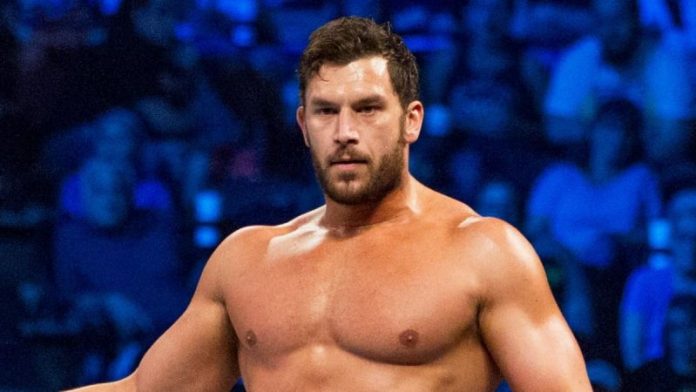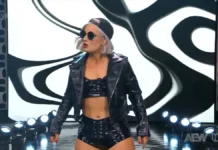
Just weeks after a round of WWE releases, a dozen more names have been given their walking papers by the sports entertainment empire. Nick Khan, the executive that was hired by the company last year that put together the massive $1 billion Peacock deal for the WWE Network, was trending on social media today, as fans speculated that the member of WWE brass could be the one that looks to trim the budget to increase the profit margin even more than the record-setting numbers that company has touted in recent years.
It’s a harsh reality, but none of these releases have anything to do with the talent of the competitors or even with sports entertainment itself. The bottom line is, in terms of a publicly-traded global corporation, those contracts are just numbers on a page, and if Nick Khan or anyone else doesn’t think the organization is getting a worthwhile return on that investment then from a purely business prospective, it makes sense to release the wrestler to save the money.
However, as World Championship Wrestling proved during the majority of its existence, professional wrestling is very much its own unique genre, and wrestlers can’t be viewed as just interchangeable names on a page. Most importantly, you can’t run a wrestling company as if it’s just another corporate entity.
On one hand, the broad approach to the releases so far this year could come back to bite WWE brass because undoubtedly, at least one of the fired talents will go make big money for another company when that cash could’ve been directed toward WWE, which is exactly why Triple H stepped in to bring Samoa Joe back under the WWE umbrella since he knows that a talent like Joe will eventually draw big money elsewhere. On the other hand, all of the criticism toward the promotion for missing the boat on some talent while underutilized others might be moot. In many ways, the massive TV deals, which were based more on the dynamics of the television business than the popularity of sports entertainment, the WWE signed a few years ago gave them a five-year safety net. The money is guaranteed regardless of sluggish ratings or Attitude era numbers so the only thing to do from a corporate stand point is to maximize the profit margin, which is exactly what the releases are designed to do for the next conference call with stockholders.
Unfortunately, many fans, as passionate as they might be about the sport and their favorite legends, don’t realize that the WWE doesn’t have to serve its fans in the same way it did previously. As a publicly-traded company, Vince McMahon has legal obligations to the shareholders and that’s ultimately the top priority for the company. Keep in mind, it’s not that fans that buy tickets to the arena, but the suits that bought WWE stock that made it a billion dollar company. Don’t get me wrong, I’m not blaming management, they took the road that yielded them the most profit when the company joined the stock market, but it’s important to remember that the fans being happy with the product will always be secondary to the shareholders being satisfied with the return on their investment.
If this strategy works long term is a completely different matter.
I’ve written often in the past few years that the vast majority of the WWE philosophy seems geared toward making the short end money now at the expense of the future. The constant 50/50 booking and general complacency of the product hasn’t generated any momentum for the program. Perhaps, with the money already guaranteed there’s just not the usual incentive to spark some buzz when Raw draws record-low ratings. The same can be said for the entire pay-per-view model, specifically since the transition to Peacock. The writing team is no longer pressured to sell a pay-per-view to the audience because the concept of PPV buys doesn’t exist anymore. At most, a subscription to Peacock that is bundled with other general content, is $4.99. Sure, what that means is that thousands of hours of WWE content are put up for a low price or free depending on the cable company so instead of a goal of a total amount of subscribers, the priority is the amount of hours watched since it generates ad revenue. Keep in mind, the countless hours of Nitro, classic pay-per-views, and the current shows, are all an opportunity for more ads to be placed during the viewing of the content. Essentially, it doesn’t matter if Vince McMahon brings back The Rock to challenge Roman Reigns for the title or if The Brooklyn Brawler is booked for a title match because the amount of money the WWE is paid for it is guaranteed.
The problem is, the WWE is taking the guaranteed money and the easy approach the past several years with the use of part-timers or nostalgia acts, but outside of Roman Reigns, how many legitimate money-drawing stars are on the current roster? When these current mega TV deals expire, how much leverage will the company have to negotiate another big contract when the ratings will show a pattern of a decrease in the audience? Furthermore, when Brock Lesnar finally retires, who is going to draw the casual fan? Again, what stars does the company have that will be a draw for the general public?
As far as the released talent, while the skills are certainly there, none of them are earth-shattering releases because the majority of them weren’t used in a major spot on television. Tyler Breeze and Fandango will be successful wherever they go next and of the dozen that were releases, they might be the pair that make the biggest impact elsewhere. Still, talent being used on a third-tier brand are expendable when a company has three different contracts worth $1 billion each total for the next few years. Although, it will be very interesting to see what happens in the next few years when the current TV deals expire and the company is tries to sign a new contract based on low TV ratings.
What do you think? Comment below with your thoughts, opinions, feedback and anything else that was raised.
Until next week
-Jim LaMotta
E mail [email protected] | You can follow me on Twitter @jimlamotta







